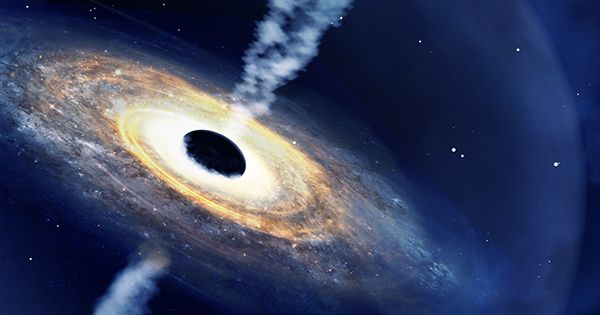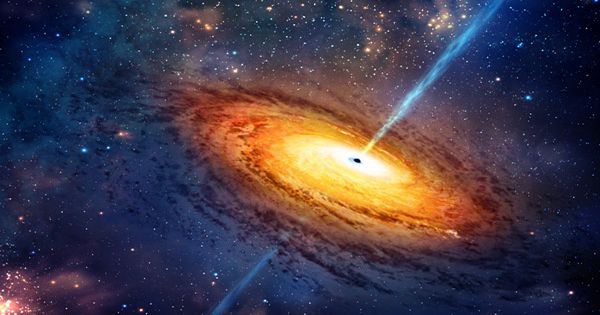Quasars are galaxies whose supermassive black holes are incredibly active. These black holes caught in a feeding frenzy, and the ingredients that gagged reach incredible temperatures.
This process releases a lot of energy, which makes these supermassive black holes brighter than the galaxies around them and allows astronomers to identify them despite their distances. The light from the recently discovered Quasars P172 + 18 comes exactly 780 million years after the Big Bang. This is one of the most distant objects ever observed, which already makes it quite interesting. However, what is truly unbelievable is that astronomers also saw the features of a radio jet. 13 billion light years away, this is the first time anyone has witnessed such a cosmic event.

However, as researchers have reported in the Astrophysical Journal, P172 + 18 are not your normal choir. It is in the “radio-loud” one-in-10 choir, which means they create a cosmic jet that glows brightly at radio frequencies. It has a supermassive black hole that weighs 300 million times the mass of the Sun, which receives gas at an incredible rate, and its jet is only 1000 years old.
Co-lead author Eduardo Bañados from the Max Planck Institute for Astronomy Said in a statement, “As soon as we got the data, we inspected it with our own eyes and we immediately learned that we had discovered the most remote radio-loud quarry we had ever known.” These observations show not only one of the earliest examples of such a cosmic event in the history of the universe, but astronomers caught it as soon as it was born: an incredible search for our understanding of cosmic cosmos space and the evolution of galaxies.
“Black hole is eating away at matter at a very fast rate, growing massively at one of the highest rates of all time,” added Chiara Mazzucchelli, a co-leading author at the European Southern Observatory (ESO) in Chile. Jet discovery is very important. We do not know for sure how supermassive black holes grew so quickly after the Big Bang. Jets can be in a process that helps them grow incredibly. It thought that the jets could disrupt the gas around the black hole, and that the rate components decreased.
Explained Bañados in a separate statement, Quasars are also effective for studying and the elements that are in them. “At the beginning of the evolution of the universe, distant radio emitting cores acted as beacons for the study of the Earth and the elements within the cores.”
Their emission can use as a backlight to illuminate positive elements around the galaxy. Future observations, such as from ESO’s ultra-long telescope, may reveal that the P172 + 18 radio jets were far from alone in the early history of the universe.















